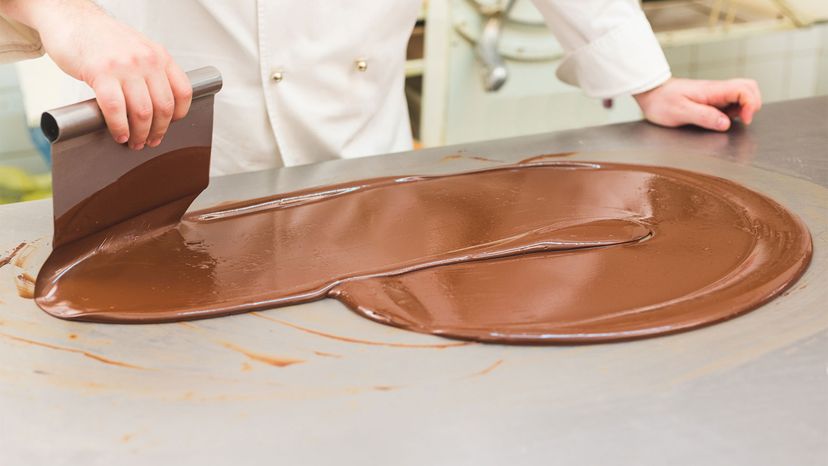Tempering and Conching Chocolate

Unless you're really into chocolate making, you've probably never heard the term conching. Yet if our eating chocolate wasn't conched, you'd definitely be able to tell the difference because it would be gritty and uneven.
Exactly how Swiss chocolate maker Rodolphe Lindt figured out the process is a legend — some sources claim that he accidentally left chocolate mixing for a few days in a melangeur, a sort of "happy accident." The result was a smooth liquid that was much easier to pour into molds and that also made chocolate customers very happy.
Advertisement
The crazy thing is that even after more than 100 years, we still aren't sure of everything that happens during conching. (The name, by the way, comes from the shell-shaped machine that Lindt eventually designed just for this process.) We just know that it makes chocolate delicious. Like most other things about the chocolate-making process, it's different depending on the type of chocolate and the company making it.
It is universal, though, that a few basic things happen to the chocolate during conching. The constant grinding action evenly distributes the cocoa butter within the chocolate mass, creating a smoother mixture. The friction polishes the cocoa particles and makes them smoother. It also generates heat in the cocoa mass, releasing volatile oils and flavor compounds. If the mass contains milk powder (which is often the case when making milk chocolate), heat will also encourage the Maillard reaction. Finally, the rotation introduces air into the mass, removing more bitter acids and compounds [source: Science of Cooking].
Tempering is another "science is magic" step in the process of making chocolate to eat. You might be familiar with this one if you've made candy. In factories, there are machines that do it automatically to take out the possibility of error. Without tempering, candy wouldn't be shiny and snappy, plus it wouldn't last as long. Basically, it involves getting the crystals of cocoa butter to the perfect size. Left to their own devices, the crystals cool into irregular, jagged shapes. Not pretty.
Chocolate scientists (what a job!) have discovered that there are six different stages of crystals depending on the temperature. Only one, stage V, at about 93 degrees Fahrenheit (34 degrees Celsius) makes for the perfect eating chocolate. So the chocolate is heated to melt all of the crystals, cooled to the temperature that induces type IV and V crystallization (81 degrees Fahrenheit or 27 degrees Celsius), agitated to create tiny type V crystals and finally, heated again high enough to get rid of all the type IV crystals. Done correctly, you end up with type V. Perfect. Screw it up and you have to start over — unless you've burned it [source: Science of Cooking].